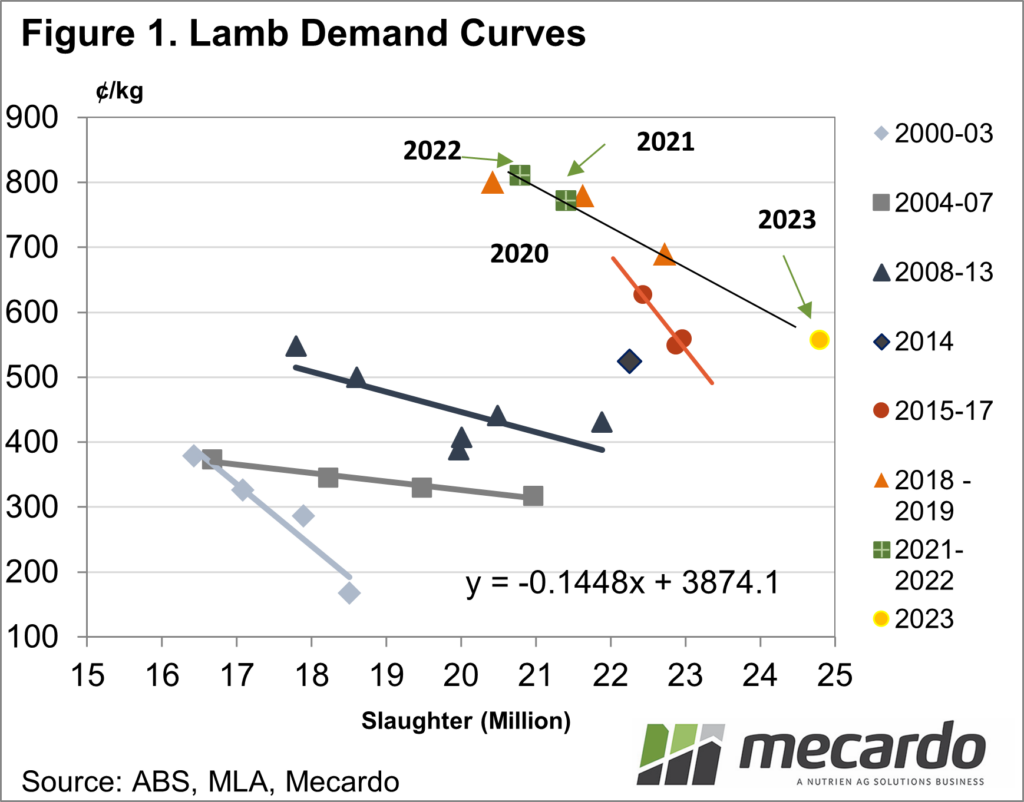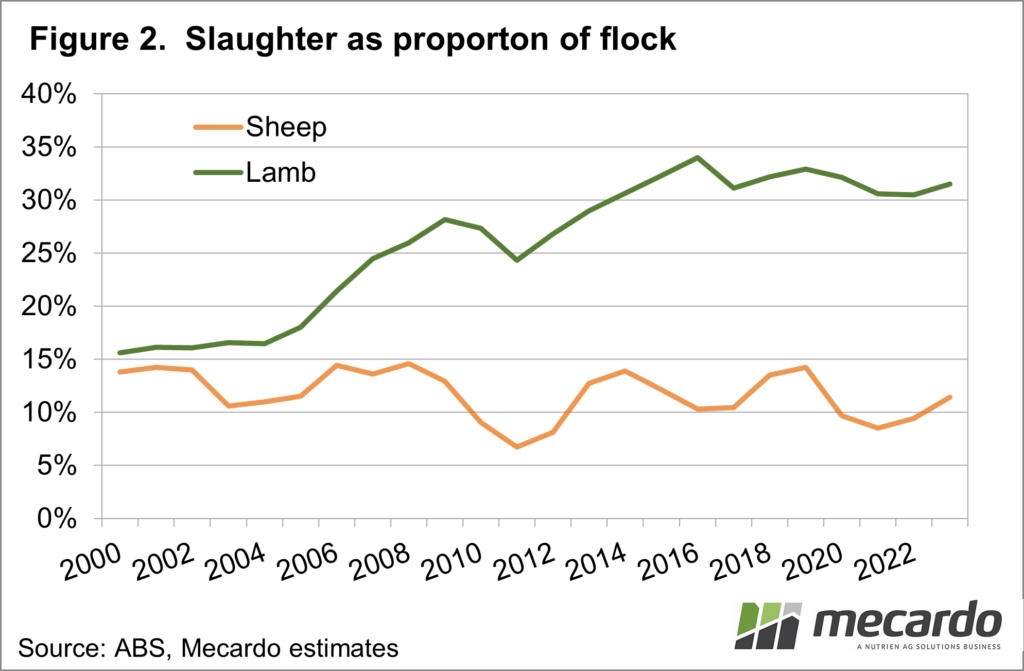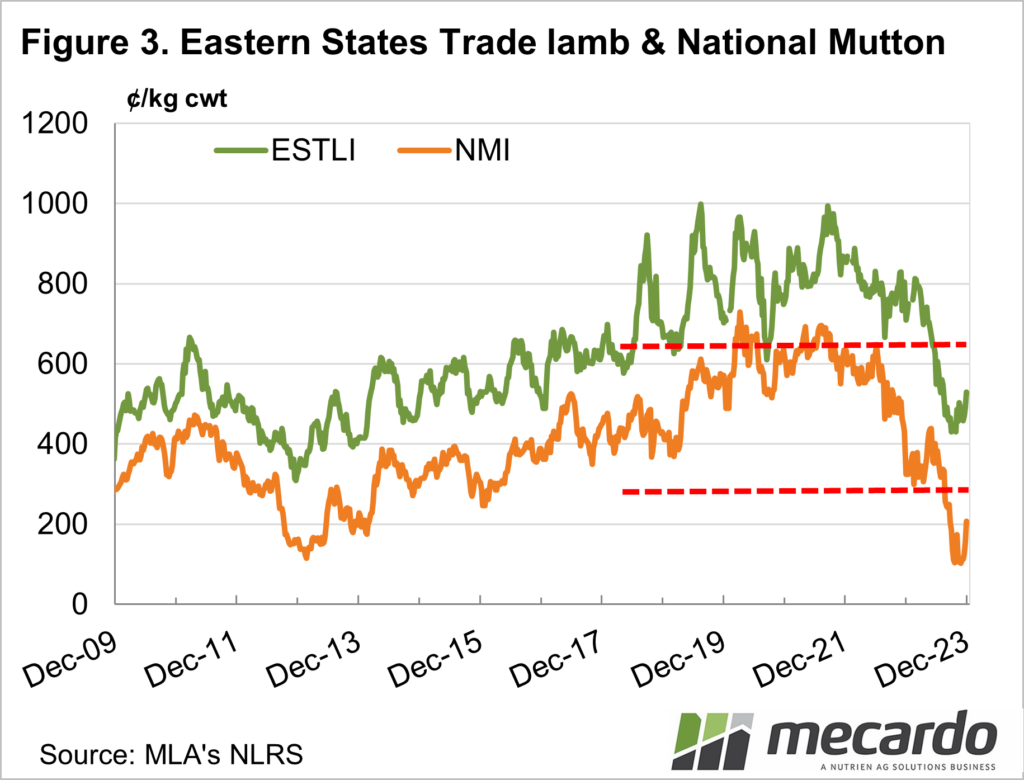It’s that time of year when we dust off the crystal ball and take a look at what markets are likely to do in 2024. There are plenty of unknowns amongst fundamental drivers of sheep and lamb markets, but at least supply is something we can get some sort of handle on.
Looking back at the
forecast produced at this time last year is a little embarrassing. Lamb and mutton prices had fallen, and we
were forecasting a year of consolidation.
What we got was a year of further declines, reaching levels not seen for
seven or eight years.
Massive increases in
supply, combined with shifting demand have been the drivers of the lows. Figure 1, which we wheeled out a fortnight
ago shows much of the decline can be attributed to supply. The question now is where lamb will sit on
this curve next year, driven by the supply of lambs.
The main driver of
lamb supply is the size of the flock.
Figure 2 shows lamb and sheep slaughter as a proportion of the flock. Despite the stronger slaughter levels of
2023, the rapid increase in the size of the flock to 78 million head in recent
years means we are not really at strong liquidation levels, but we might see a small
decline. We’ll know more when official
flock numbers for 2023 are released in January.
Marking rates are the
other major driver of lamb supply. Good
seasons have led to a couple of years of strong lamb marking rates. The recent dry has been replaced by good
rains, which could boost conception rates for early lambs. There is, however, plenty to play out with seasonal
conditions from here.
We know from previous
downturns that prices rarely bounce back to highs in the short term. Back in 2013, it took 2 and a half years to
regain peaks, with relatively steady prices thereafter, with the usual seasonal
variation.
With better alignment of
supply and demand in 2024, we could potentially see a 50% retracement of 2023
falls. This would put the Eastern States
Trade Lamb Indicator (ESTLI) around an average of 625¢/kg cwt. Mutton prices around 300¢/kg cwt are nothing
like the good times, but certainly better than the $1 doldrums of the spring
just gone.
What does it mean?
Going back to Figure 1 an ESTLI at 650¢/kg will require slaughter around a million head lower than this year. This is probable, given the number of ewe lambs and merinos which have made their way to market this spring, and the need to hold more young sheep in flocks.
On the mutton front, hopefully, heavy liquidation is behind us, and we’ll see more balance between supply and demand in 2024. Prices around 300¢ are not great, but it’s not giving them away.
Have any questions or comments?
Key Points
- Heavy supply and shifting demand caused the 2023 ovine price crash.
- The coming year should see supply and demand move towards more balance.
- A 50% recovery of 2023 falls will see more reasonable rates for lamb and mutton.
Click on figure to expand
Click on figure to expand
Click on figure to expand
Data sources: MLA, ABS, Mecardo















